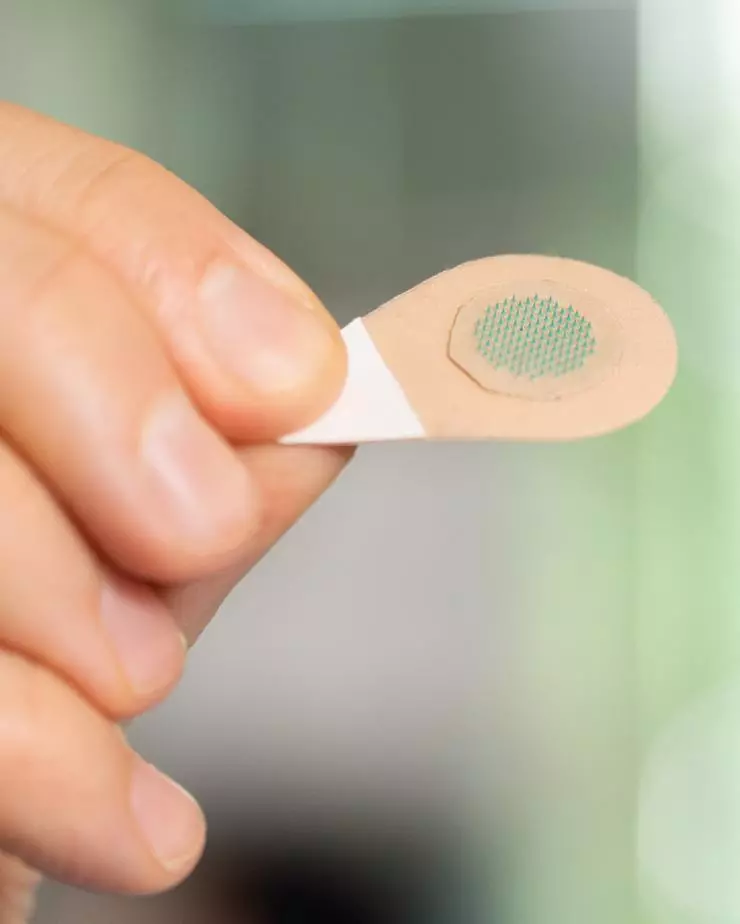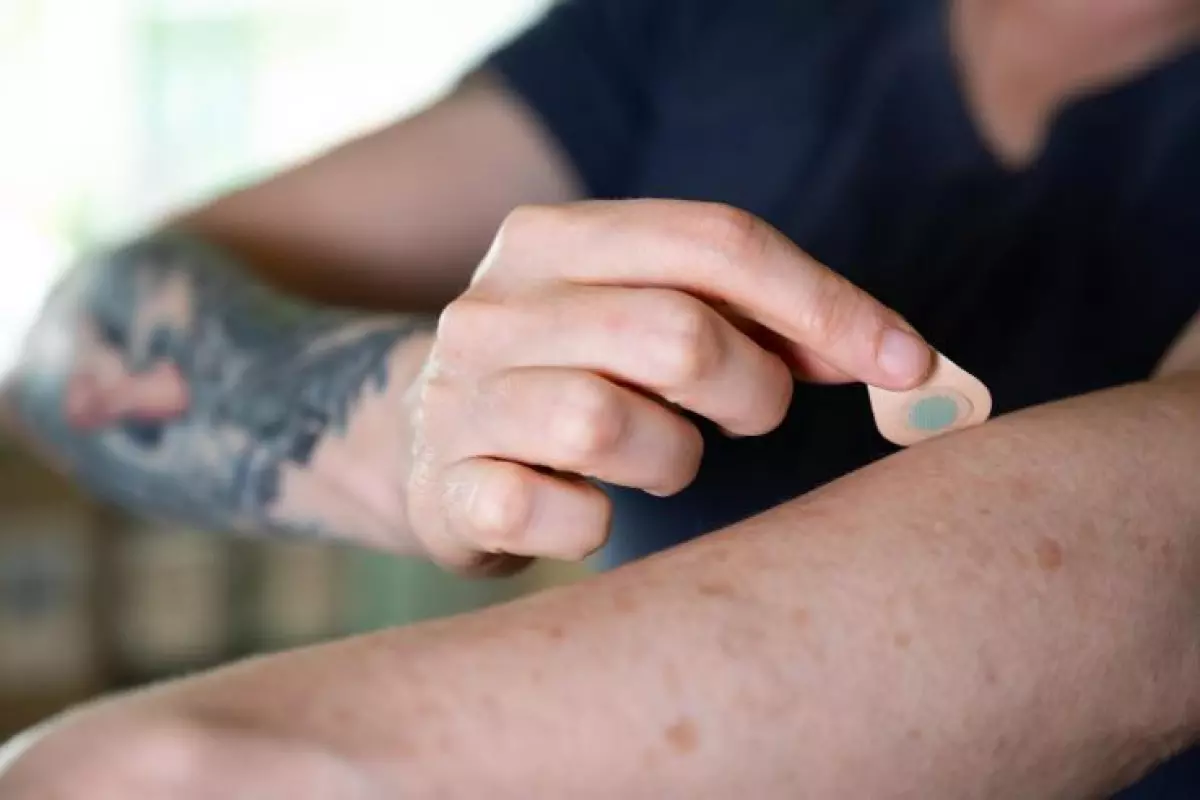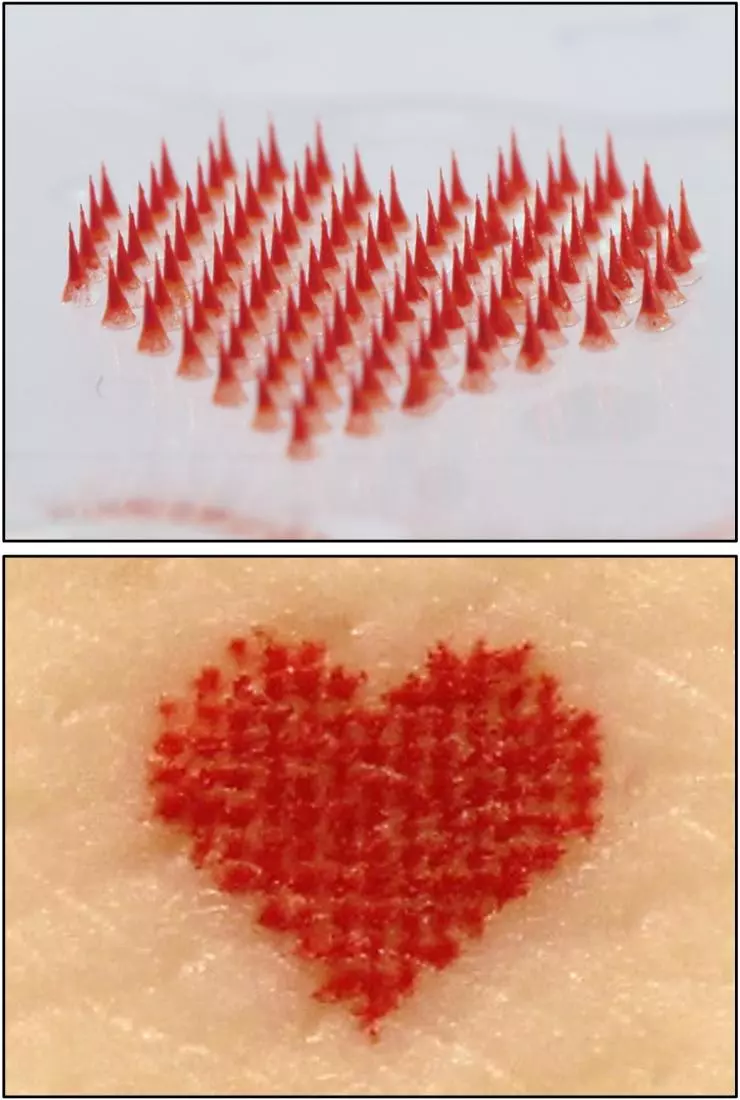Scientists at the Georgia Institute of Technology have reported the development of a microneedle patch that can be self-administered and painlessly deposit a tattoo onto skin within minutes. The technology is initially proposed for simple medical or animal uses but a number of cosmetic uses may be possible in the future.
Microneedle technology has been around for a few years now, with researchers proposing the patches being used for everything from delivering vaccines and insulin to measuring alcohol and glucose levels in real time. Mark Prausnitz has been working with microneedle patches for years and wondered whether the technology could be used to administer painless tattoos.

"We saw this as an opportunity to leverage our work on microneedle technology to make tattoos more accessible," said Prausnitz. "While some people are willing to accept the pain and time required for a tattoo, we thought others might prefer a tattoo that is simply pressed onto the skin and does not hurt."
So the researchers essentially fabricated a number of microneedle patches with simple designs and engineered the needles to deliver tattoo ink. Each tiny needle acts like a single pixel of an image, and dissolves within minutes of being pressed into skin.

This preliminary test of the technology demonstrated a few simple applications on rodent models. So basic images such as numbers or a heart shape were found to effectively imprint into skin. The researchers also tested different types of ink, such as UV-sensitive tattoos that were essentially invisible in normal light but appear when illuminated under ultraviolet light.

As a proof-of-concept the study’s results are promising. The tattoos remained clearly visible on the rodents for up to a year before beginning to show signs of distortion. The researchers suggest because rat skin ages rapidly the tattoos should be stable and permanent on human skin for longer than 12 months but, of course, more experiments will be necessary to establish how these microneedle tattoos actually come out on people.
Initial uses for this technology proposed by the researchers include medical applications, such as tiny tattoos communicating blood type or medical conditions. Other more immediate uses could be in veterinarian contexts to note an animal’s vaccination status.
"The goal isn't to replace all tattoos, which are often works of beauty created by tattoo artists," Prausnitz noted. "Our goal is to create new opportunities for patients, pets, and people who want a painless tattoo that can be easily administered."

But perhaps the most compelling uses of this technology are more future-focused speculations. Currently the patches offer nowhere near the resolution necessary to compete with modern tattoo art. However, if that resolution could be improved in the future, and a simple way to print out these patches could be developed, then anyone could hypothetically design their own tattoo, print out a patch and stick it on.
This painless future of self-administered tattoos could even include temporary forms of ink designed to degrade after several months or years. So microneedle tattoo patches could be quick, easy, and reversible. No more life-long regrets over that youthful tattoo mistake.
The new study was published in the journal iScience.
Source: Georgia Tech






